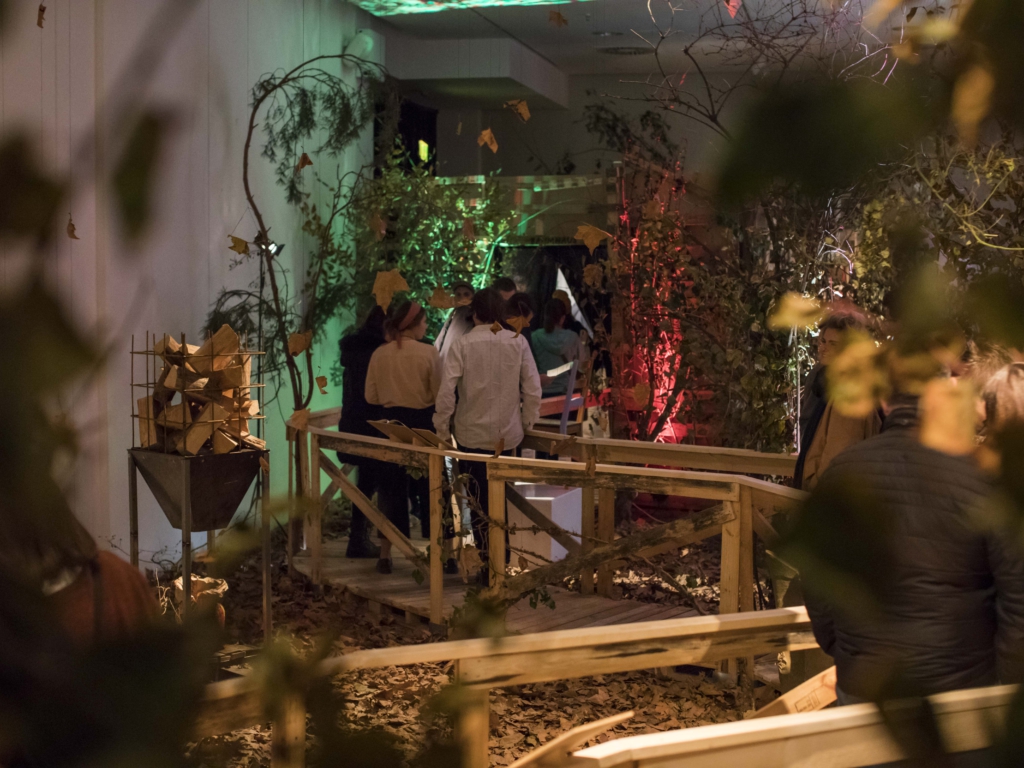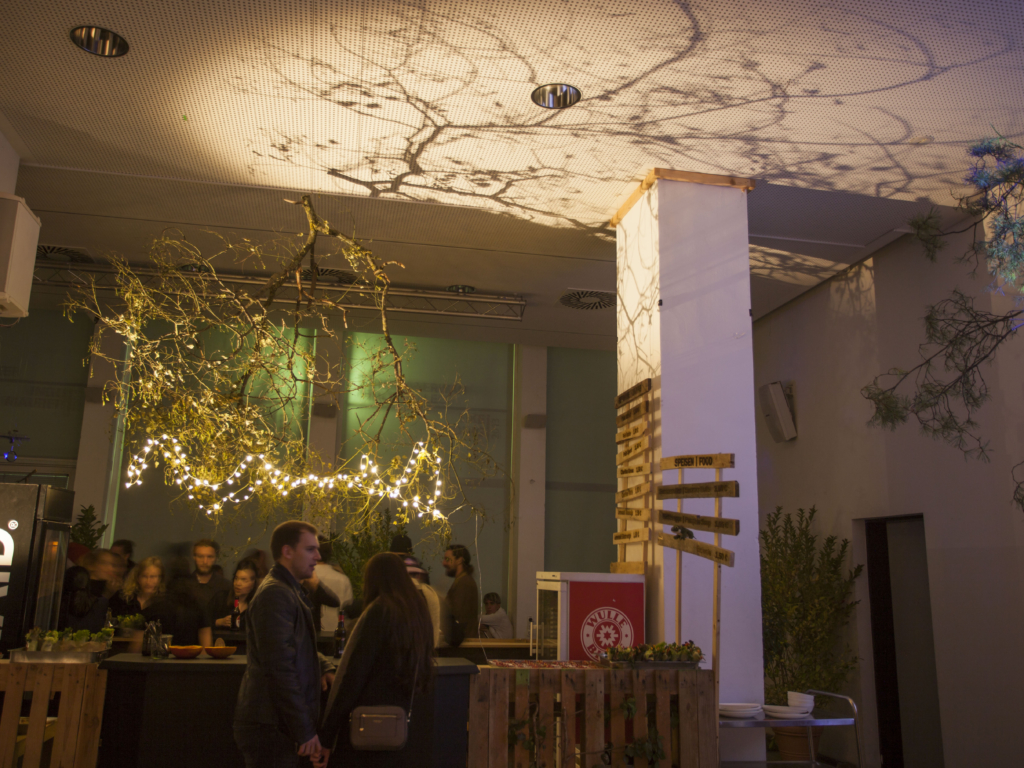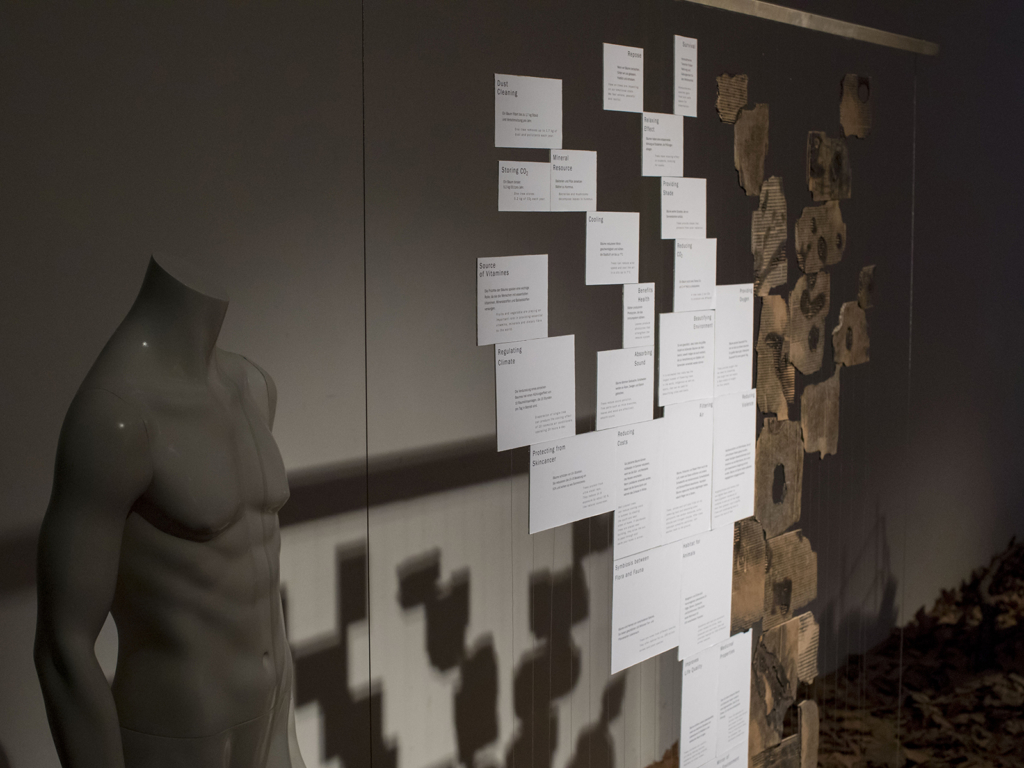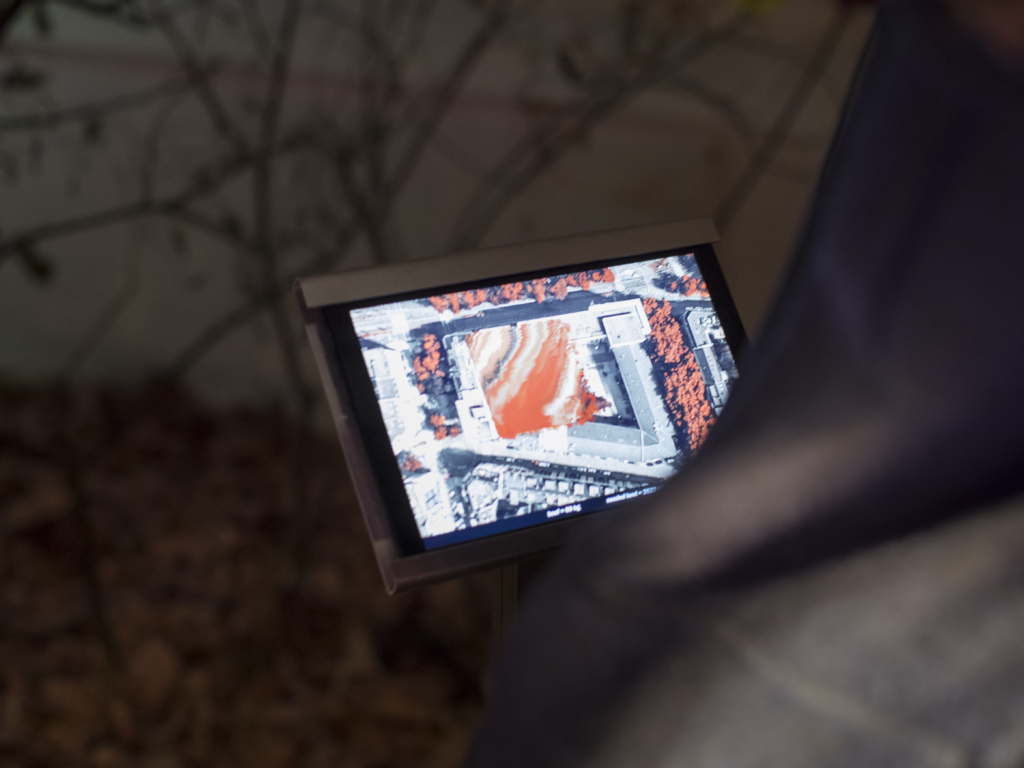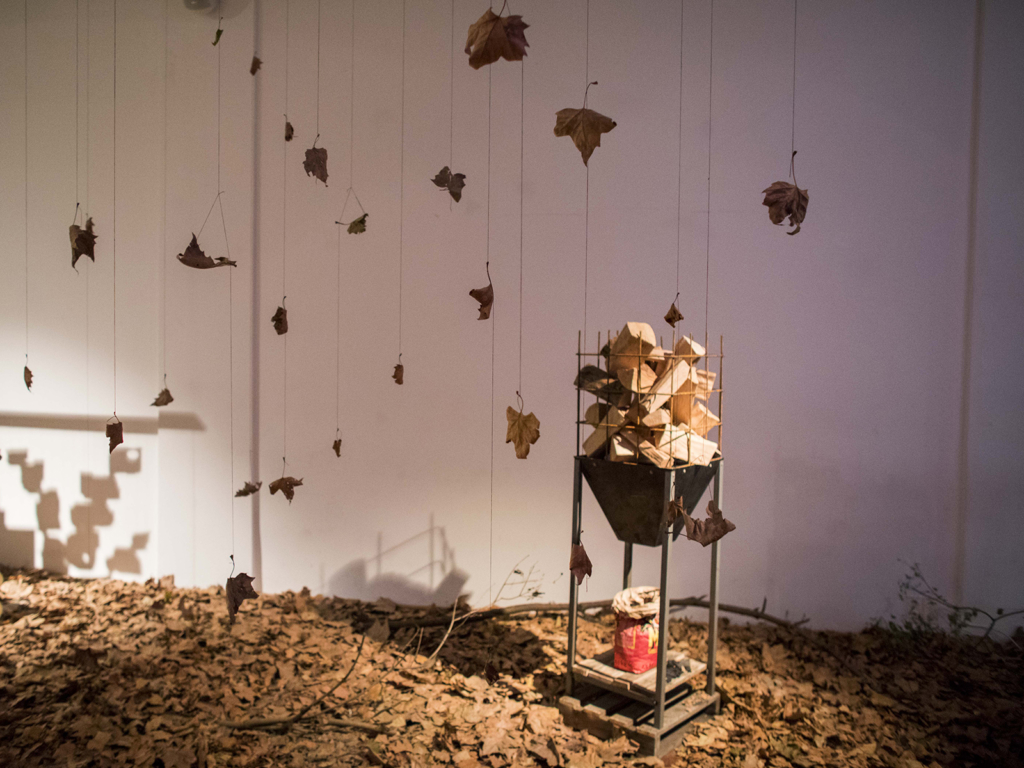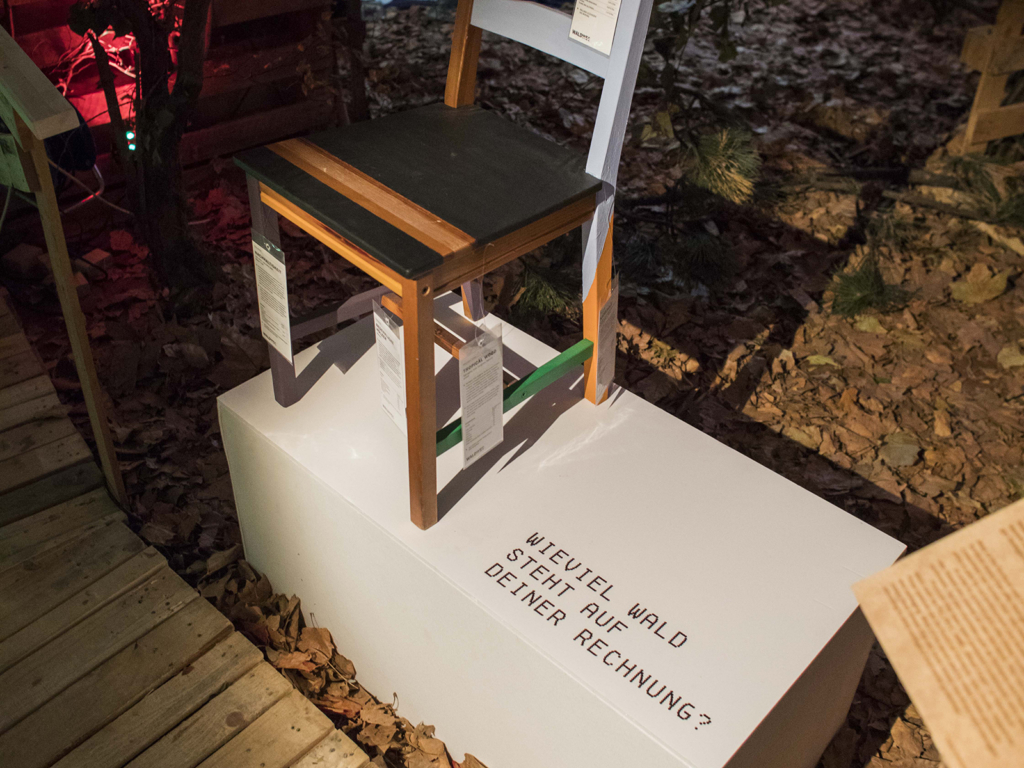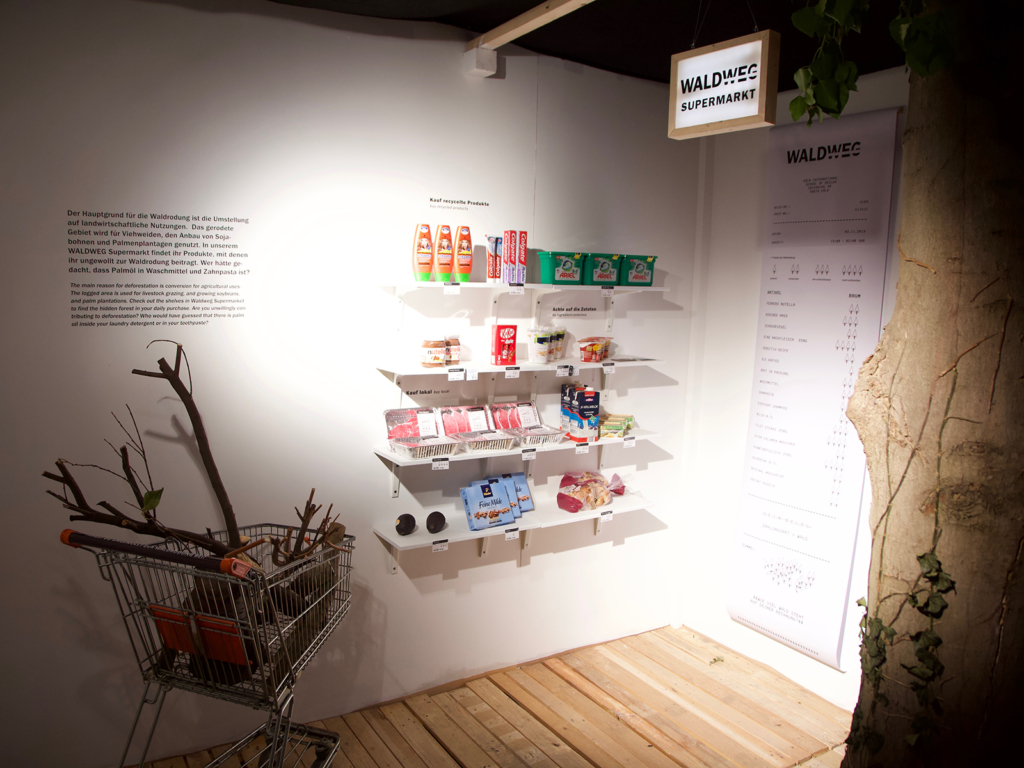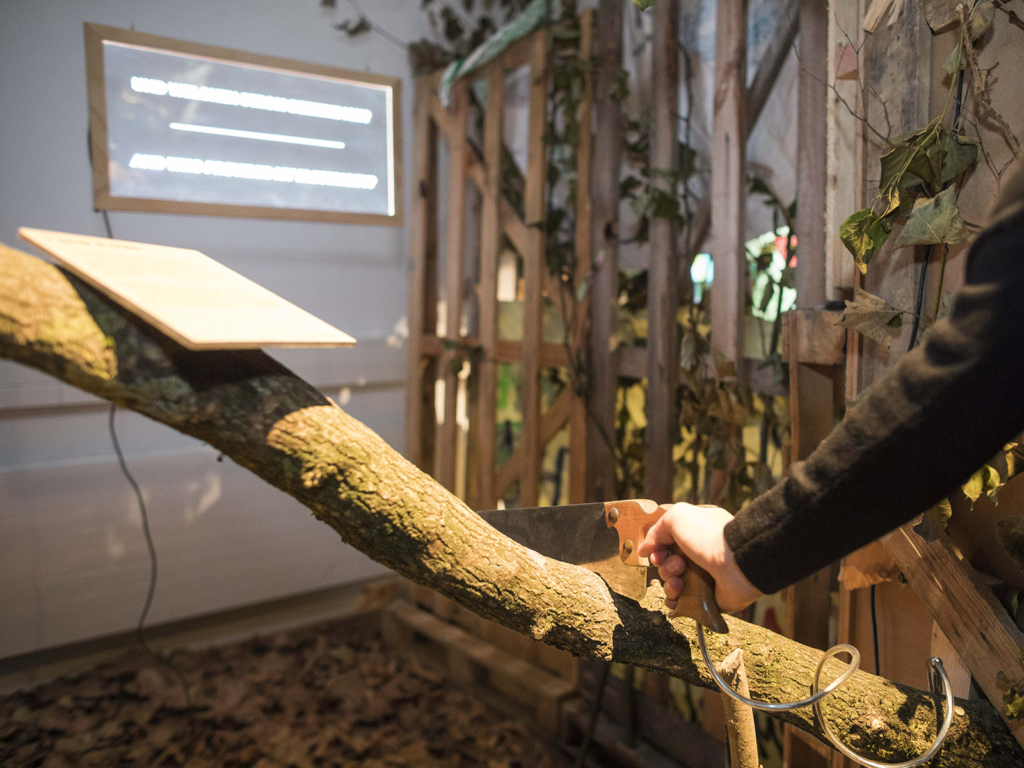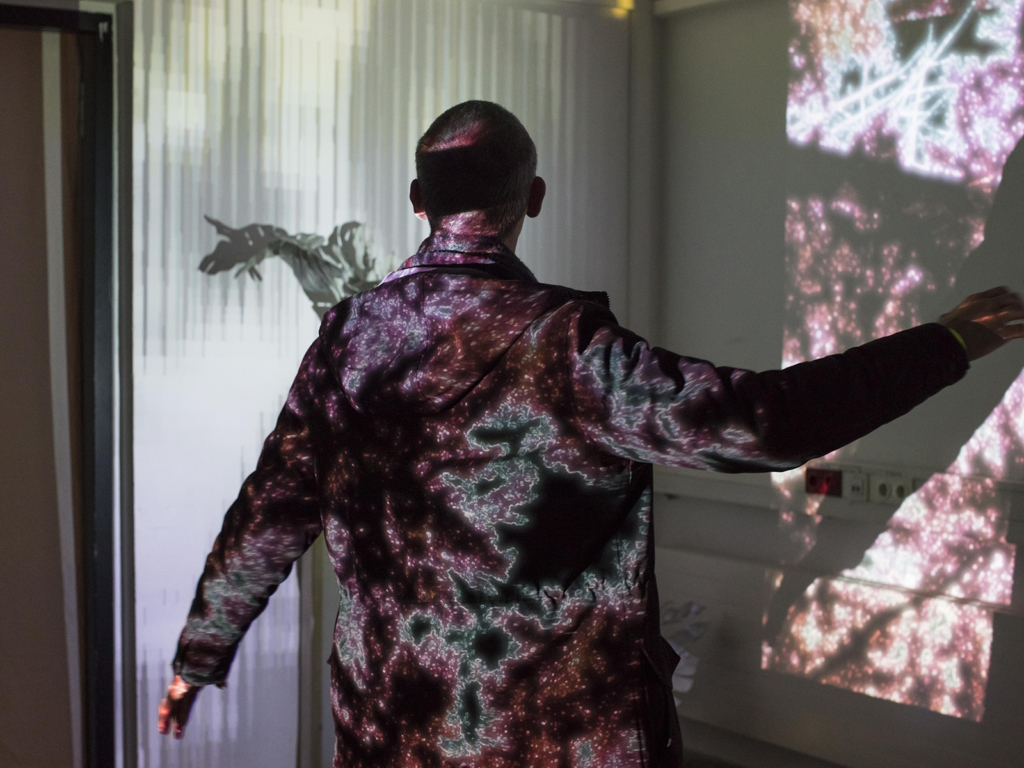In the context of the19th edition of Museum’s Night Cologne, KISD – Köln International School of Design hosted on Saturday, November 3, the exhibition “WaldWeg“ – making the topic of deforestation the subject of discussion. Through various (interactive) installations, light projections, and design exhibits, the event showcased and addressed the impact of and controversy around the (un-)controlled clearing of forests.
Every year, 13 million hectares of forests are chopped down or burnt for the benefit or at the cost of society, economy, and ecology. Just recently, German energy provider RWE was heavily criticized for the undertaking of clearing the “Hambacher Forst“ near Cologne triggering massive protest not only among environmental activists. KISD now provided visitors on Saturday, November 3, with an immersive experience into ecological consciousness and political and cultural debate. The German title “WaldWeg“ with its ambiguity was chosen on purpose – be it a path through the forest, or be it that the forest has completely vanished.
ONE TREE
Leo Hedwig, Katja Heinrich, Mariam Mikadze
Trees are important for the ecosystem. But what importance do trees have for us? How do they support the lives of animals, plants and humans? What influences do trees have on the air, the climate and water cycle? What would life be with and without trees? Numerous advantages of each individual tree clearly emphasize its importance for our environment.
EXTENT OF DEFORESTATION
Julius Walsch
Estimatedly seven billion trees are cut down worldwide every year. With a worlds population of 7.7 billion, this roughly equals to one tree per human being. The decisive reason for deforestation is in most cases not timber as a construction material itself, but the land that is covered by these forests. Research shows that 40%of the deforested tropical land is used by small-holder agriculture, 25% for cattle pasture, 20% by large-scale agriculture and only 15% for logging. A less dominant part is used for urbanisation, infrastructure development, natural occurring forest fires and fuelwood collection.
STUMPMAP
Conner Biermann
The StumpMap is an attempt to make forest growth and loss data per country more accessible. The data is displayed through colors on a world map. The color red represents the loss of forest, while green visualises the growth. A color gradient shows the respective gradations by color intensities. Countries that do not clear or reforest scalable amounts of forest are not colored.
MEATSCALE
Kjell Wistoff
One of the main reasons for deforestation of rainforest is land grabbing for cattle ranching and soy agriculture. Big agriculture corporations profit from animal products and soy food for livestock animals that comes from areas of former rainforests.
Meatscale puts you into the role of a cattle and calculates the space that would be needed to turn yourself into a giant piece of beef. It then shows the amount of land that would be needed to produce your own weight in beef and transforms it into an individual artificial piece of meat on the map.
EU SCHEITERHAUFEN
Benni Bräuer
Germany alone imports 250,000 tons of charcoal per year. That is the equivalent of about 100 million bags of charcoal. To produce this amount you need up to ten times the amount of wood. 61% of all charcoal bags are subject to the risk of illegal exploitation. 42% contain tropical woods. A legal gap in the EU wood trade regulation allows coal products without proof of origin on the European market and thus contributes to the destruction of our last primeval- and rainforests.
PRICE BATTLE
Katja Heinrich
Most of the furniture sold in Germany comes from well-known furniture stores that offer their goods at the lowest possible prices. Consumers can furnish their new homes at low prices, but the real price is paid by our environment and workers in the wood industry. In order to produce and offer cheap furniture for the consumer, forests are cleared all over the world. This not only affects the rainforests, but also countries such as Romania and Russia.
Products that have been produced sustainably carry quality labels such as FSC, PEFC, WWF, “Blauer Engle” or Naturland. These symbols can be found on furniture, toys, books and packaging. Most of the wood used to make these products comes from forests that are more closely monitored and managed according to strict ecological and social guidelines.
WALDWEG SUPERMARKET
Kaon Kim, Federico Fiermonte
Waldweg supermarket is an installation that presents the hidden forest in our daily lives. The shelves are filled with products such as shampoo and coffee that we use everyday without knowing that our purchases unwillingly contribute to deforestation. Who would have guessed that there is palm oil inside your laundry detergent or in your toothpaste? The aim of this installation is to raise awareness of our daily consumption in regards to deforestation and suggest a way to avoid it.
I SAW A TREE
Anastasia Bondar
Depending on the provider, the generation of electricity may directly be linked with deforestation. This interactive installation invites to generate power for light through the movement of sawing a tree – and thereby reflect on personal consumer choices of electricity supply.
DIFFERENCE
Hannah Baldauf, Mayara Lafratta
Just as the name of the light effect suggests, this room encourages the visitors to turn the dark scenario of deforestation into a brighter future perspective. Through interactive projection mapping techniques, you may change the parameters of the footages here displayed. Either by sound or movement, make a change that is visible to the eye just as we’d like the change to be visible in the world.
